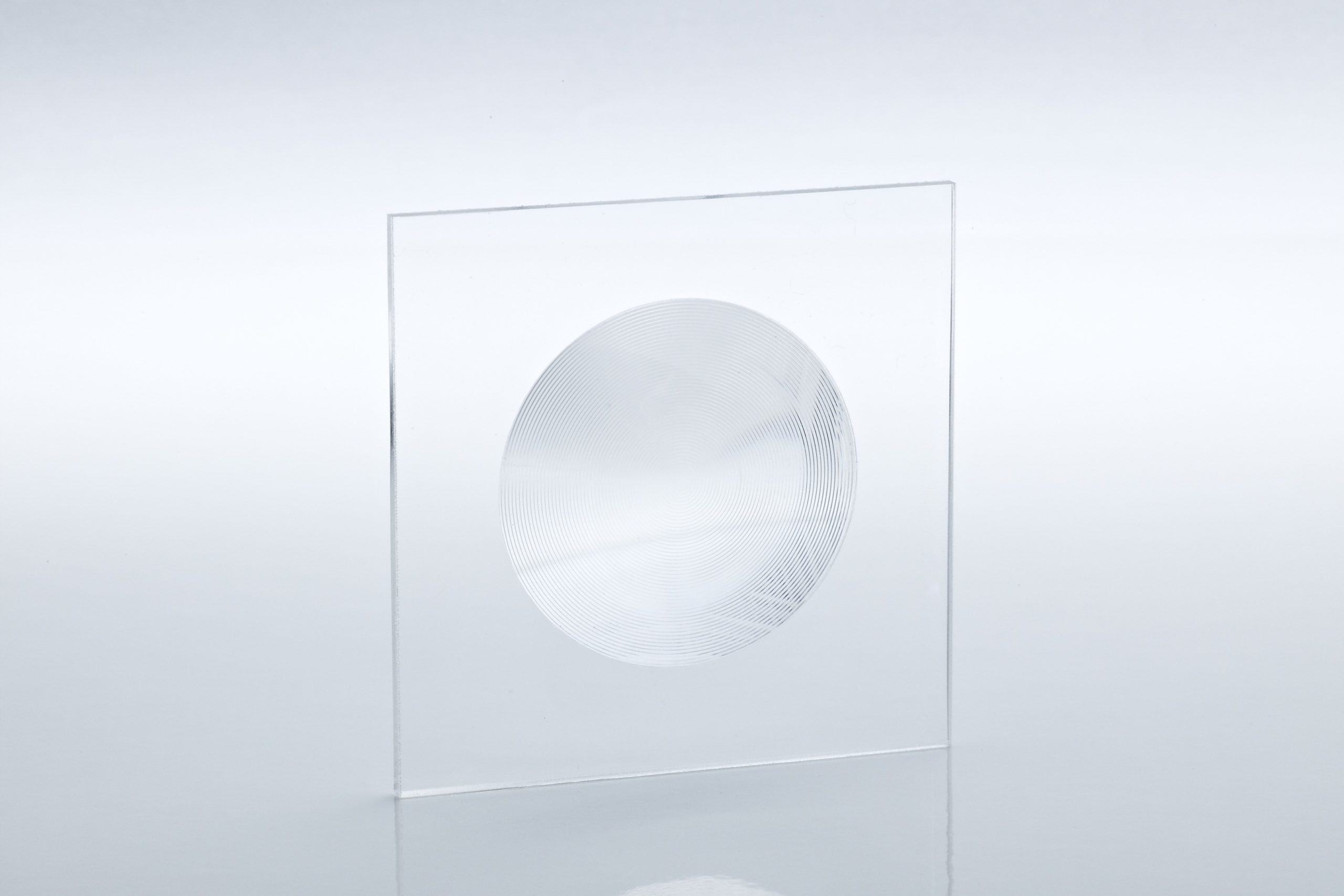Fresnel Lenses: A Brief Introduction
16th Jan 2019Fresnel lenses, invented by Augustin Jean Fresnel, have been in used since the 19th century when they played a vital role in focusing the beams in lighthouse lamps and were also used in theatre spotlights. They are flat on one side, with the other shaped much like a dartboard made up of a number of concentric grooves acting as individual prisms, bending parallel light rays to a common focal length.
Fresnel lenses are thin yet have a common focal length equivalent to that of a traditional lens. Because the lens is so thin, only a small amount of light is lost to absorption.
Used for a variety of applications including non-precision imaging, photography, illumination and light gathering, Fresnel lenses are incredibly versatile and can be customised by varying the density of the grooves. The higher the density, the better the quality of the image; lower groove density makes the lens more efficient: perfect for light gathering applications such as condenser systems and solar collectors where image quality is not an issue.
Fresnel lenses can also be used for projection and magnification purposes, although with such high levels of image distortion they are suitable only for applications where quality is not critical or where a solid lens would be too heavy or bulky.
The different types of Fresnel lens
There are various types of Fresnel lens, each suited to different types of application. Cylindrical Fresnel lenses, for example, are designed to focus light in one direction rather than to a point.
For solar concentration such as concentration photovoltaic (CPV) on the other hand, Fresnel lenses of reverse configuration are used.
Reverse configuration Fresnel lenses are designed so that the flat side faces the sun, and the grooved side faces the photovoltaic cell in order to focus the light. Regular Fresnel lenses work in reverse.
Because image quality is of no concern in solar concentration applications, reverse configuration Fresnel lenses can be produced with a lower groove density to create a larger surface area, so boosting their efficiency.
Fresnel lenses from Knight Optical
At Knight Optical we supply a range of Fresnel lenses, including reverse configuration lenses for solar concentration applications. These lenses are supplied uncoated as standard, although antireflective coatings can be applied depending on specific requirements.
Our range of reverse configuration Fresnel lenses are manufactured to order from PMMA acrylic. This material offers excellent weather resistance and light transmission and high mechanical strength, surface hardness and abrasion resistance. Sizes range from 100 x 100mm to 1400 x 1050mm. Customisation within these parameters is offered.

Precision accuracy to customer specification is guaranteed courtesy of our state of the art metrology laboratory and highly respected technical specialists.
For tailored advice on all your Fresnel lens requirements from our helpful multilingual technical sales team please call 01622 859444 or [email protected].
For full technical specifications on our full range of Fresnel lenses please visit https://www.knightoptical.com/stock/optical-components/uvvisnir-optics/lenses/fresnel-lenses/
